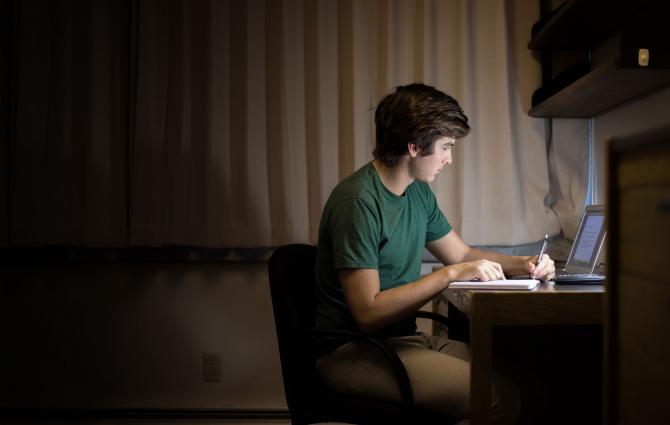I walked into my first university classroom the way Dr. Watson walked into murder mysteries—a tad slow in processing what was happening, too busy soaking everything in, and in need of some pointers.
Whereas Sherlock Holmes was there to tug the strings of his sidekick’s sense of comprehension, I relied solely on my high school classroom experiences. But just like conflicting alibis, things didn’t seem to match very well.
Here’s a magnifying glass for you to see what a university lecture is really like, and to solve the mystery of how you can learn more effectively in class.
Case File I: The Adventure of the Cryptic Classroom
Most UBC courses are in the lecture format (others include labs and tutorials). During the Winter Session, lectures are technically 60 to 90 minutes in length (but you’re let out 10 minutes early so that you can get to your next class) and generally amount to 3 hours of class time per week. The total number of students in a classroom can vary from 30 to 200.
The Find a Space feature on the Learning Spaces website has lots of classroom images, even 360° tours. You can search for your classroom, and plan out where you’d like to sit since there’s no seating plan. Furniture include:
- Fixed tables (e.g. FSC 1003)
- Moveable tables (e.g. ANGU 296)
- Fixed tablets (e.g. MATH 100)
- Moveable tablets (e.g. BUCH B303)
- Mixed (e.g. ORCH 1001)
Pro tip: If you can, get to class with some time to spare, and look for seats with outlets nearby (some classrooms have them under the table). Also, if you require seats with left-hand-oriented tables, you may need to look around in advance as well.
Case File II: The Adventure of the Curious Cast
Many different individuals may teach lectures, e.g. professors, grad students, and sessional instructors, so don’t assume at the outset that your instructor is a “Dr” like Dr. Watson. Some instructors like to go by their first names. Make sure you know how they want to be addressed.
Lecture styles vary from instructor to instructor. Some like to stick with PowerPoint presentations, others like to use document cameras. You may also encounter instructors who write on the chalkboard or use microphones during lectures. Many lectures require an iClicker for in-class quizzes and polls, so make sure you get one!
Other individuals you may encounter in the classroom include Teaching Assistants (TAs) and Peer Tutors, e.g. upper-year undergrads or grad students. They work alongside the instructor and are resources you can reach out to.
Since lots of material may be covered in one lecture, remember to stay caught up with the pre-readings and assignments, and take the initiative to ask for help from your instructors and TAs/Peer Tutors when you need it.
Case File III: The Adventure of the Marked Mission
One of the reasons you’re here at university is to learn. It’s important to show up to your lecture, bring supplies you think you’ll need, and sit somewhere you know you can learn effectively.
Dr. Jay Wickenden recommends that students sit at the front of the class. Many professors agree on this advice; you are less likely to be distracted by other students in front of you (e.g their laptop screens).
If you’re finding it hard to concentrate, consider packing up and relocating yourself like Hercule Poirot (who hopped on the Orient Express and ventured into the maw of Mesopotamia).
Try to engage with the instructor during class (and visit them in office hours), and interact with your peers. Many of my friends from first year were the people I sat next to.
You may also get individual/group assignments that you have to complete in class and hand in at the end so attendance is important.
Case File IV: The Adventure of the Silent Stunt
In university classrooms, you get the superpower to leave and enter whenever you need to.
With such a large number of students, your instructors won’t always take attendance. No Inspector from Scotland Yard is here to pursue you when you steal out of the room, but remain respectful when you enter or exit (say, for washroom breaks).
If you’re late, avoid disrupting the class. Enter through the back door if you can, and take a seat quietly on the side without disturbing other students.
If you have to leave early, sit near the exit at the beginning of the class, so when it’s time to go, you can slip out almost without anyone noticing.



